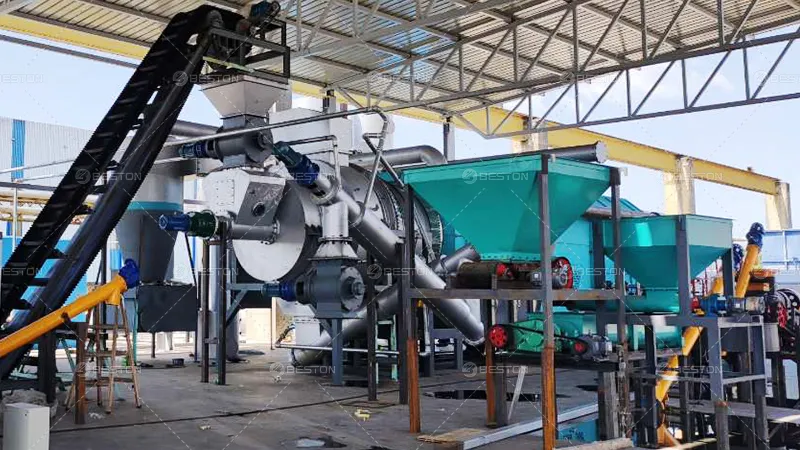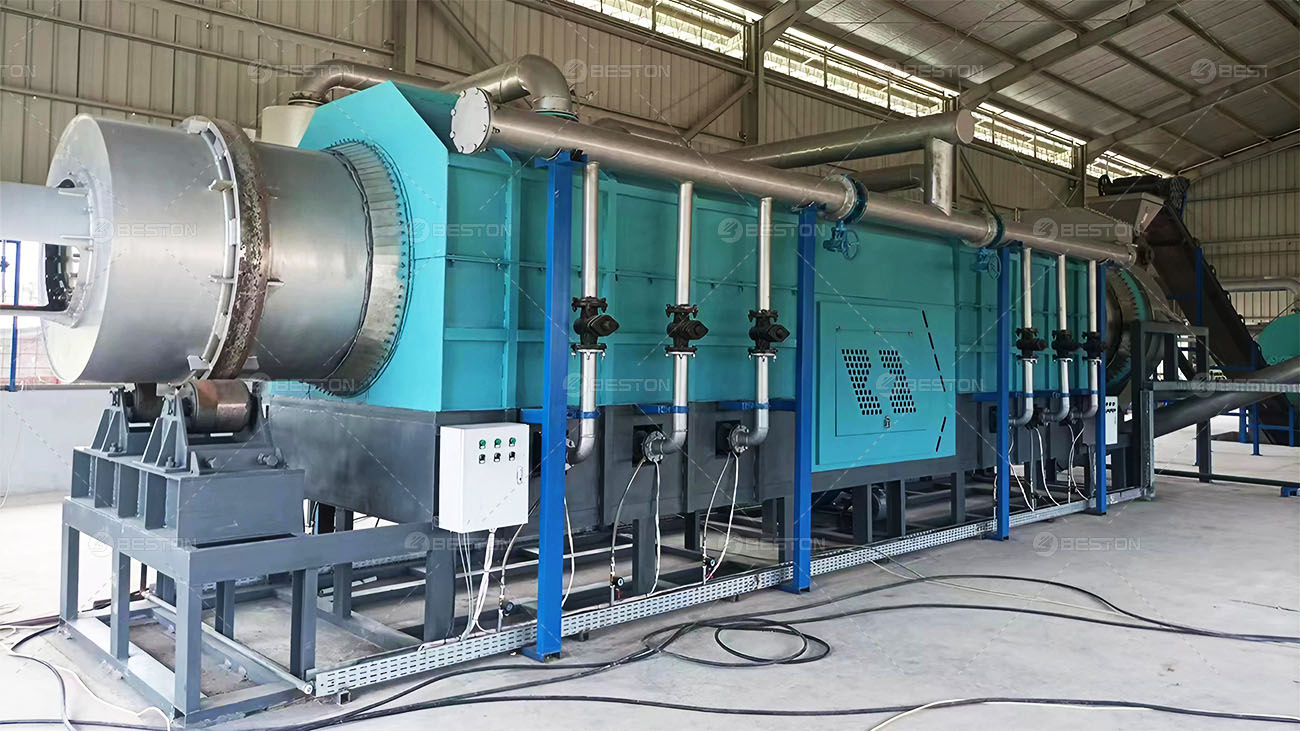Key Factors Influencing the Efficiency of Biochar Production
Biochar production efficiency is determined by a range of factors, each contributing to the overall yield, quality, and economic viability of the process. The efficiency of biochar production is not just reliant on the input material but also on the technical specifications of the biochar production equipment and the operational conditions within the biochar reactor. In this article, we explore the critical factors that impact the efficiency of biochar production.

1. Raw Material Composition
The composition of the feedstock used in biochar production equipment plays a pivotal role in determining both the yield and quality of the final product. Biomass such as wood chips, agricultural waste, or even animal manure varies significantly in moisture content, density, and chemical composition. Materials with high moisture content, for example, require more energy to reach the necessary pyrolysis temperature, leading to higher energy consumption and reduced efficiency. Similarly, the lignin content in the feedstock is a crucial factor, as lignin tends to produce a higher-quality biochar compared to materials with higher cellulose or hemicellulose content.
Feedstock particle size also influences the efficiency of the pyrolysis process. Smaller particles heat more uniformly and allow for faster processing, improving both yield and energy efficiency.
2. Temperature Control
Temperature is one of the most important factors affecting biochar pyrolysis equipment efficiency. Pyrolysis is a thermal degradation process that occurs at elevated temperatures, typically ranging from 350°C to 700°C. The temperature influences the rate of decomposition of the organic material, the composition of the gaseous byproducts, and the porosity of the resulting biochar.
Higher temperatures generally produce biochar with more desirable physical characteristics, such as higher surface area and better stability, which are essential for applications in soil improvement and carbon sequestration. However, excessive temperatures can lead to an increase in the formation of gases and liquids, thereby reducing the yield of biochar. Therefore, maintaining optimal temperature control within the biochar reactor is critical for achieving efficient production and maximizing biochar yield.
<iframe width=”1280″ height=”720″ src=”https://www.youtube.com/embed/pHhLQjImMj8″ title=”Biomass to "Black Gold": Continuous Biochar Machine 3D Video!” frameborder=”0″ allow=”accelerometer; autoplay; clipboard-write; encrypted-media; gyroscope; picture-in-picture; web-share” referrerpolicy=”strict-origin-when-cross-origin” allowfullscreen></iframe>
3. Heating Rate
The rate at which heat is applied during the pyrolysis process can also significantly affect biochar production efficiency. A slow heating rate allows the material to undergo a more uniform breakdown, resulting in a higher-quality biochar. Conversely, a rapid heating rate may lead to incomplete pyrolysis and lower biochar yield due to insufficient carbonization.
The heating rate is particularly influenced by the design of the biochar production equipment, particularly the biochar reactor design. Reactors that enable better heat distribution and more controlled heating rates often lead to more efficient production processes. To obtain biochar equipment with high thermal efficiency, please contact Beston Group.

4. Residence Time
Residence time refers to the amount of time the feedstock remains within the pyrolysis reactor under high-temperature conditions. The longer the residence time, the more thorough the pyrolysis process, which can increase the yield of biochar. However, extended residence times can also increase energy consumption, leading to diminishing returns if the process is too long.
Optimizing the residence time involves balancing the need for thorough pyrolysis with the goal of minimizing energy use. The biochar reactor design, including factors like the size of the reactor and the material flow rate, plays a significant role in regulating residence time to achieve optimal biochar production efficiency.
5. Reactor Design and Efficiency
The biochar reactor design is fundamental to achieving high production efficiency. Key features of the reactor, such as its thermal insulation, air-tightness, and the method used to introduce heat, have a direct impact on the overall performance of the pyrolysis process.
An efficient biochar reactor design ensures that heat is uniformly distributed, reducing the risk of hot spots that can cause uneven pyrolysis and energy waste. Additionally, reactors with integrated systems for recovering and reusing gases or heat contribute to greater energy efficiency and reduced operational costs.
The type of reactor, whether it is a rotary kiln, fixed-bed reactor, or fluidized bed reactor, also affects biochar production efficiency. Each reactor type has its advantages and drawbacks, and the optimal choice will depend on the scale of the operation and the specific feedstock being processed.
6. Operational Parameters
Beyond the physical design and composition of the materials, various operational parameters contribute to biochar production efficiency. The flow rate of biomass into the reactor, the control of gas extraction, and the management of cooling times all impact the overall process. Efficient operation of the equipment relies on precise monitoring and control systems to regulate the aforementioned parameters.
Moreover, the operation of the biochar production equipment itself—whether automated or manual—affects the consistency and efficiency of production. Automated systems that allow for continuous feedstock introduction and product extraction tend to optimize production cycles and reduce labor costs.
7. Product Handling and Post-Processing
The final handling of the biochar product also plays a role in overall efficiency. Once the pyrolysis process is complete, the biochar must be cooled and stored properly to maintain its quality. Efficient handling systems that cool and package biochar quickly can minimize the loss of valuable carbon content and improve the efficiency of the production process.
In addition, if the biochar is intended for agricultural or environmental use, further processing such as activation may be required to enhance its surface area and adsorption properties. This post-processing, while adding an extra step to the overall production process, can increase the market value of the biochar and, in turn, its profitability.